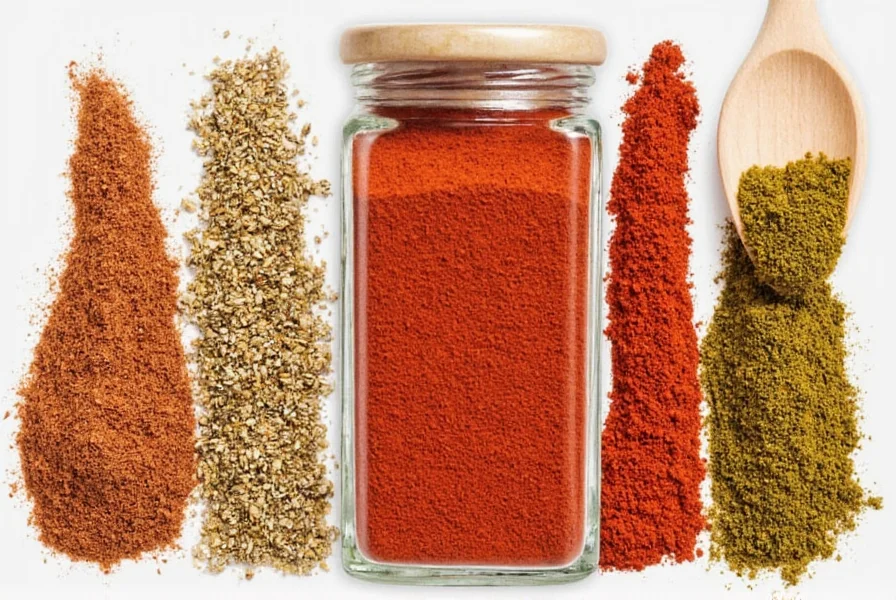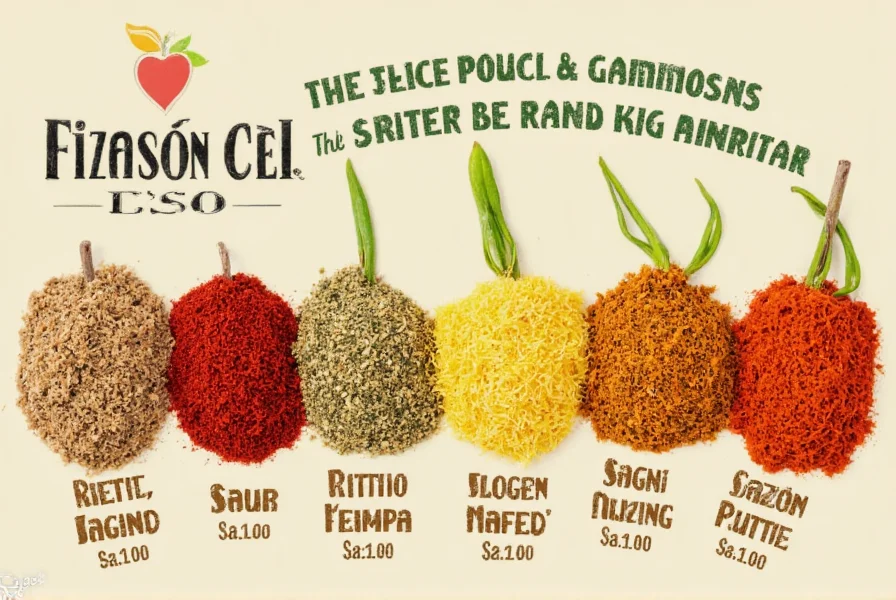Sazón translates directly to "seasoning" or "flavor" in English. It is a pre-mixed spice blend commonly used in Latin American cuisine, especially Puerto Rican cooking, to enhance the flavor of meats, rice, beans, stews, and soups. This guide explains its ingredients, uses, comparisons with other seasonings, and how to choose the best brand.

Table of Contents
- What Is Sazón in English?
- Breaking Down the Ingredients
- How Sazón Compares to Other Seasonings
- Why You Should Be Using Sazón
- Pro Cooking Tips with Sazón
- Buying Guide: Choosing the Best Sazón
- FAQs About Sazón in English
- Final Thoughts
What Is Sazón in English?
The word "sazón" translates to "seasoning" or "flavor" in English. In Latin American cuisine—particularly Puerto Rican cooking—it refers to a specific pre-mixed spice blend used to elevate the taste of meats, rice, beans, stews, and soups. It is not a single spice but a harmonious combination designed to deliver bold, earthy, and savory notes.

Breaking Down the Ingredients
Sazón blends vary by brand and region, but these common ingredients are typically included:
- Cumin: Adds warmth and earthy depth
- Garlic powder: For savory richness
- Coriander: Brightens the flavor profile
- Annatto (Achiote): Provides signature golden-orange hue and mild peppery taste
- Oregano: Earthy herbal undertones
- Chili powder or paprika: Adds subtle heat and color
- Salt: Enhances all flavors
| Brand | Main Ingredients | Special Features |
|---|---|---|
| Goya Sazón | Cumin, garlic, coriander, annatto, oregano, salt | Classic version; widely available |
| McCormick Latino | Includes onion powder, turmeric | Milder and slightly sweeter |
| La Preferida | Spicier with added chili flakes | Ideal for those who love heat |

How Sazón Compares to Other Seasonings
Sazón is often confused with taco seasoning or adobo, but they differ significantly:
| Seasoning | Main Flavor Profile | Best Used For | Key Differences |
|---|---|---|---|
| Sazón | Earthy, warm, slightly spicy | Rice, beans, meats, stews | Contains annatto; vibrant golden color |
| Taco Seasoning | Smoky, chili-forward | Tacos, burritos, nachos | Heavier on chili powder and cumin |
| Adobo | Savory, garlicky, salty | Marinades, grilled meats | Drier texture; less colorful than sazón |
When to Choose One Over the Other
- Use sazón for rich base flavor with natural color.
- Pick taco seasoning for Mexican street-style dishes with smoky heat.
- Opt for adobo when marinating meats for grilling or roasting.

Why You Should Be Using Sazón
1. Instant Flavor Upgrade
A dash of sazón transforms bland dishes into full-bodied masterpieces. It adds depth without overpowering main ingredients.
2. Beautiful Color Boost
Annatto provides a natural golden-orange hue—no artificial colors needed. Your rice will look restaurant-worthy every time.
3. Versatile Across Cuisines
While essential in Latin American cooking, sazón works in fusion recipes: soups, roasted vegetables, burgers, or even popcorn!
4. Great for Quick Meals
Short on time? Sazón lets you whip up flavorful meals in minutes without mixing multiple spices.

Pro Cooking Tips with Sazón
- Don't skip the oil! Toast sazón in oil before adding liquids to maximize flavor release.
- Adjust to taste, especially if store-bought versions contain salt.
- Make your own blend for full ingredient control (see DIY recipe below).
- Use it early in cooking to allow spices to bloom and infuse thoroughly.
DIY Sazón Recipe
- 2 tbsp ground annatto (or paprika + turmeric for color)
- 1 tbsp ground cumin
- 1 tbsp garlic powder
- 1 tbsp dried oregano
- 1 tsp coriander
- ½ tsp chili powder (optional)
- 1 tbsp sea salt
Mix well and store in an airtight container. Use within 3–6 months for best flavor.

Buying Guide: Choosing the Best Sazón
Top Picks for Sazón Blends
| Product Name | Flavor Notes | Best For | Recommended Use |
|---|---|---|---|
| Goya Sazón | Classic earthy and bright | Everyday Latin dishes | Perfect for beginners and families |
| McCormick Gourmet Latino | Mild, aromatic | Beginner cooks, fusion cooking | Great for soups and grains |
| La Flor Sazón | Spicy and robust | Grilled meats and hearty stews | Ideal for spice lovers |
Factors to Consider
- Heat Level: Some versions include chili or peppers; adjust to your spice tolerance.
- Added Preservatives: Choose options without MSG or artificial additives for clean labels.
- Package Size: Buy smaller sizes if new to sazón; larger ones for regular use.

FAQs About Sazón in English
What does sazón mean in English?
The word "sazón" translates directly to "seasoning" or "flavor" in English. In culinary terms, it refers to the act of seasoning food or the seasoning itself that gives dishes their characteristic taste.
How do you pronounce "sazón"?
Sazón is pronounced "sah-SOHN" with the emphasis on the second syllable. The "z" sounds like an "s" in Spanish pronunciation.
Can I substitute sazón?
Yes! If you don't have sazón on hand, use a mix of cumin, garlic powder, oregano, and paprika (plus a touch of turmeric for color).
Is sazón gluten-free?
Most store-bought blends are gluten-free, but always check the label. If sensitive, opt for certified gluten-free versions or make your own at home.
Does sazón contain MSG?
Some commercial brands may contain MSG, but many popular versions (like Goya's original formula) are MSG-free. Always check the ingredient list if avoiding MSG.
Is sazón spicy?
Traditional sazón has mild heat from chili powder or paprika but is not considered spicy. Some brands offer "hot" versions with added chili flakes.
Can I use sazón in place of adobo?
You can, but sazón has a different flavor profile. Adobo is more concentrated and salty, while sazón offers broader flavor layers and adds color to dishes.
Where can I buy sazón?
You can find sazón in most grocery stores (international/Latin food aisle), Latin American markets, and online retailers. Goya is the most widely available brand in the United States.
How long does sazón last?
Store-bought sazón typically lasts 1-2 years when stored in a cool, dry place. Homemade versions are best used within 6 months for optimal flavor.
What dishes use sazón the most?
- Arroz con gandules (Puerto Rican rice and pigeon peas)
- Pollo guisado (stewed chicken)
- Stuffed peppers and empanadas
- Bean soups and stews
Final Thoughts
Sazón isn't just a seasoning—it's a flavor-packed shortcut to authentic Latin American cuisine. With its warm, earthy notes and stunning color, it's the secret ingredient you never knew you needed. Whether you buy it pre-made or craft your own, sazón deserves a permanent spot in your spice rack.
Ready to elevate your cooking? Grab a packet of sazón next time you're at the store and start experimenting. Trust us—once you go sazón, there's no going back!

Happy cooking and may your kitchen always smell amazing!











 浙公网安备
33010002000092号
浙公网安备
33010002000092号 浙B2-20120091-4
浙B2-20120091-4